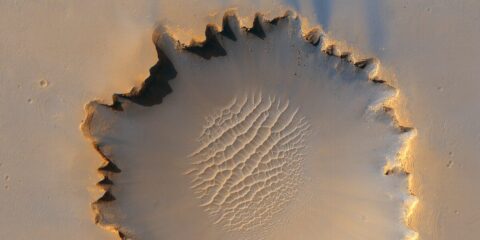
Spacecraft Engineering
Putting space into the hands of WA: the Binar team launch student hardware and industry payloads into low-earth orbit onboard cube satellites.

Fireball Observation & Recovery
The Desert Fireball Network (DFN) and Global Fireball Observatory (GFO) track fireballs with remote camera systems to determine their origins in the solar system and recover fallen meteorites.

Sample Return & Analysis
Enabled by space mission collaborations and the world-class facilities of the John de Laeter Centre, SSTC researchers gain insights from precious extra-terrestrial materials.

Impact Cratering
Investigating the impact history of the solar system through the cratering record of Earth, Mars, the Moon, Vesta, and other solar system bodies.

Meteorite Characterisation
Space rocks help us unravel the history of the solar system and planetary bodies within it.

Lunar Geoscience
Our research has helped to resolve the initial formation of the lunar crust, evolution of igneous and volcanic activity, and the history of impact events on the Moon.

Earth Observation
We combine satellite remote sensing and data fusion techniques to solving meaningful environmental problems related to forest health monitoring, smoke detection, and bushfire prevention.

Planetary Mapping
We can apply machine learning techniques and convolutional neural networks to analyse planetary science images.

Origins of Life
Studying ancient fossils in the Pilbara is assisting our search for life on Mars.

Outreach & Education
We promote STEM pathways and enable careers in space, through exciting projects, hands-on courses, and engaging activities.

Mission Involvement
With collaborations in NASA, JAXA and ESA, SSTC researchers have put hardware on the surface of other planets.

